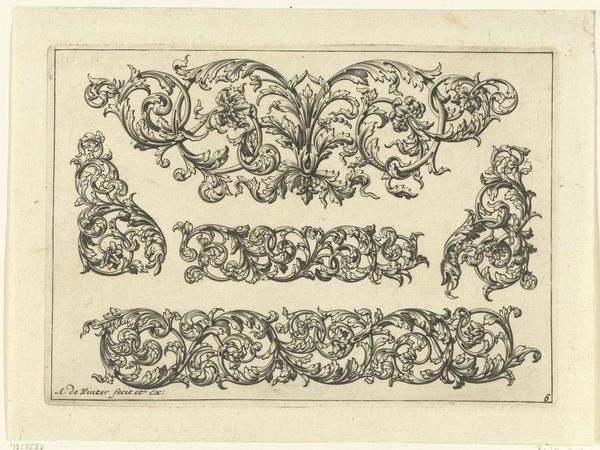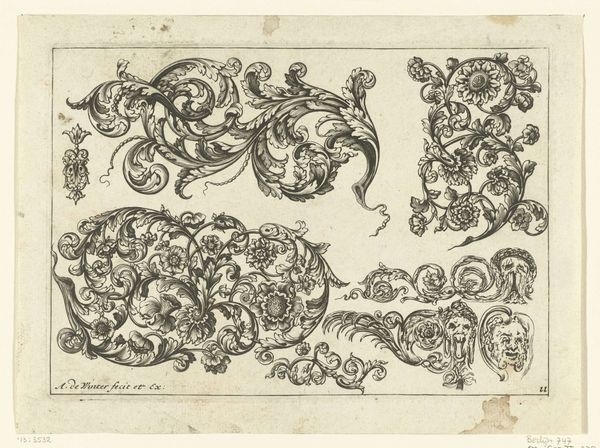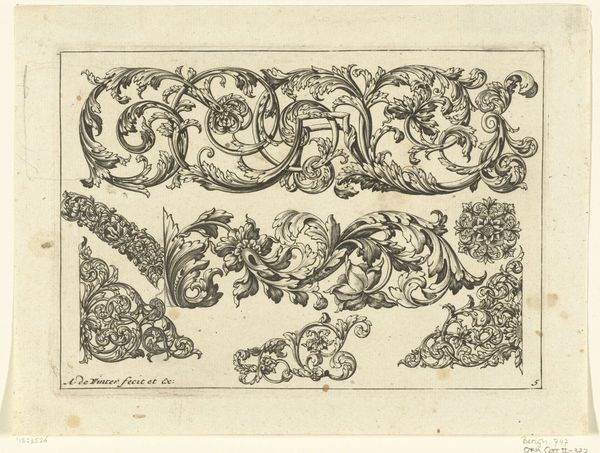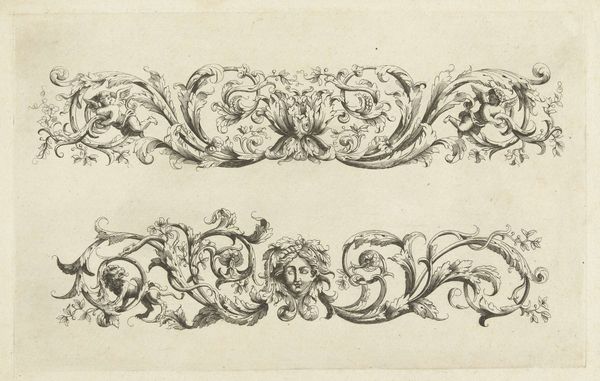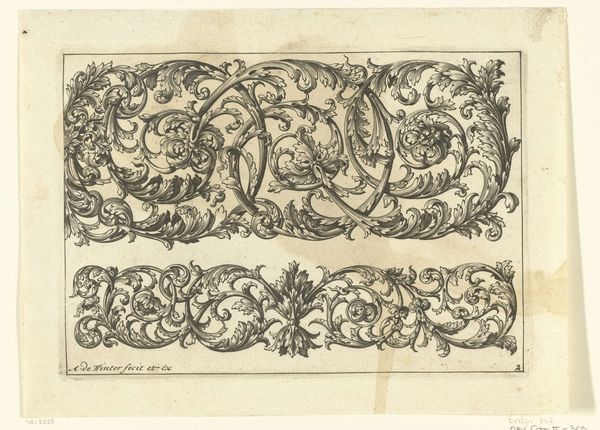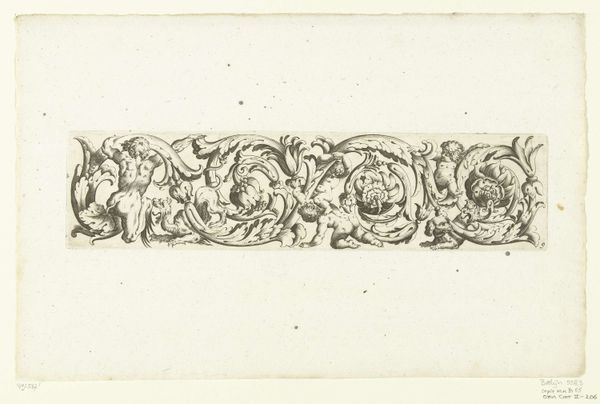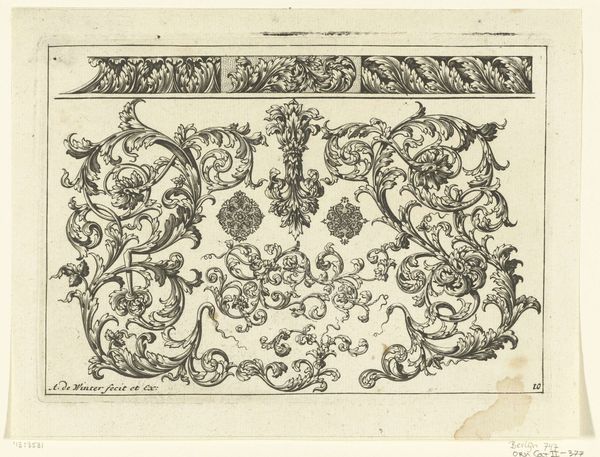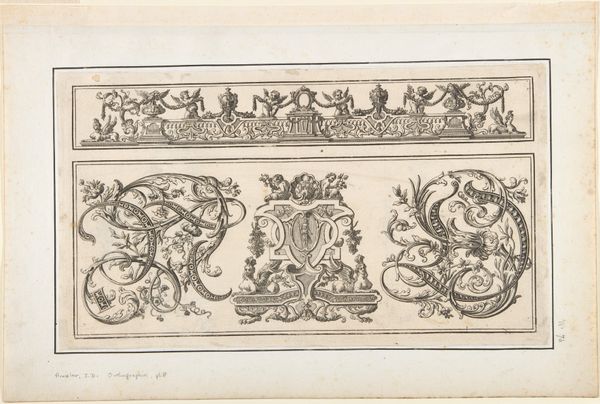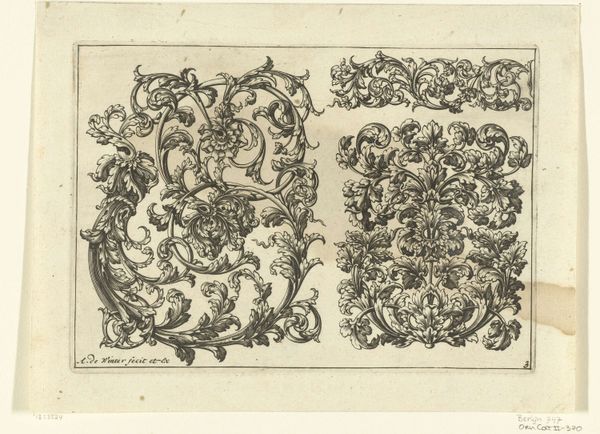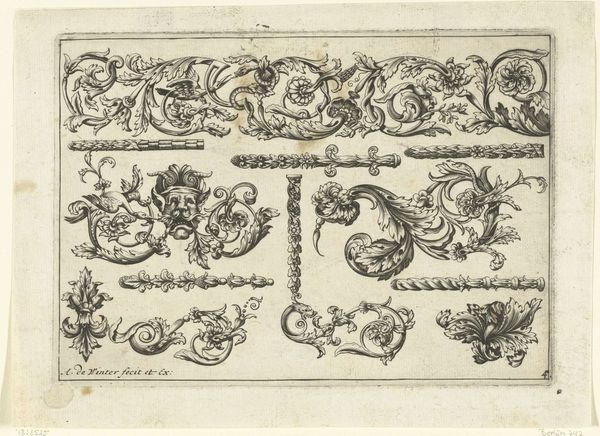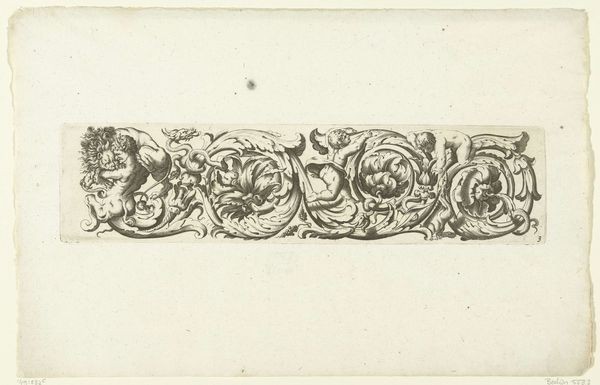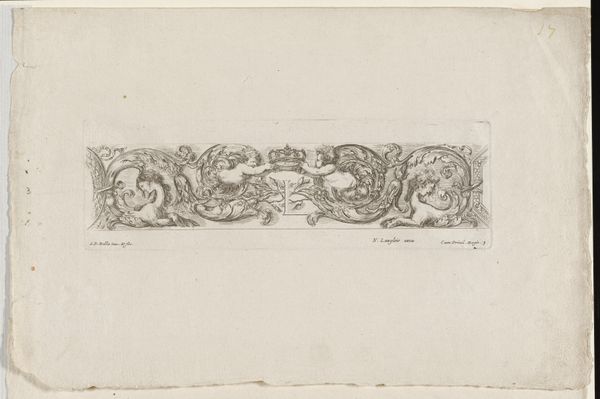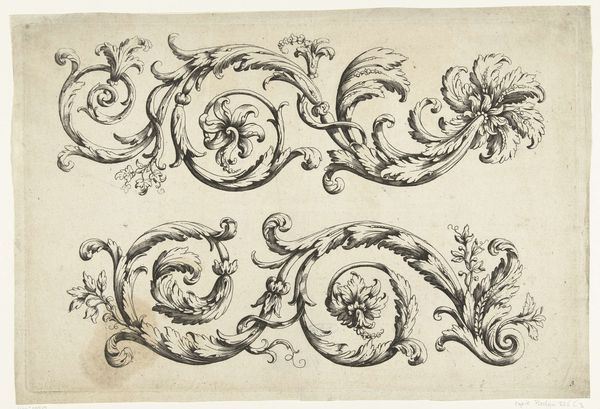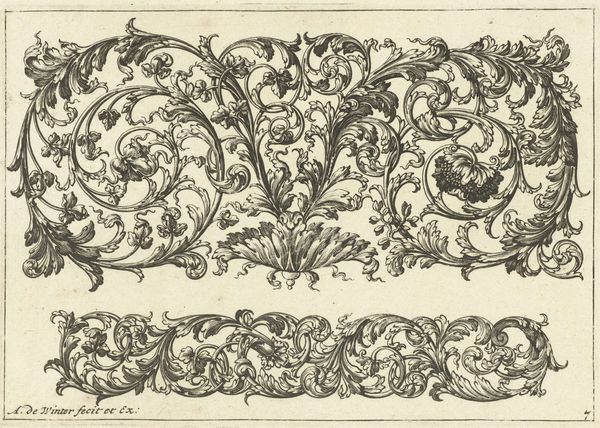
drawing, print, etching
#
drawing
#
baroque
#
pen drawing
# print
#
etching
#
geometric
#
line
#
decorative-art
Dimensions: height 134 mm, width 190 mm
Copyright: Rijks Museum: Open Domain
This print, 'Twee friezen van bladranken,' was created by Anthonie de Winter in the late 17th or early 18th century. Here, we see two friezes adorned with elaborate foliate designs. These botanical motifs – leaves and flowers – are not merely decorative; they are potent symbols of life, growth, and renewal, echoing ancient mythologies and fertility rites. Note how the acanthus leaves curl and unfurl. These are not unlike the palmettes seen on ancient Greek pottery or the lotus blossoms of Egyptian columns. The curling acanthus leaf mirrors the life cycle of plants, yet it also resurfaces repeatedly in architectural ornaments. The lion can be seen as the guardian of the frieze. It emerges as a powerful emblem, echoing the protective figures found in ancient Near Eastern art, where lions guarded temples and palaces. The image is laden with latent memories, engaging our subconscious on a deep, primal level. Through this cyclical progression, these symbols have resurfaced, evolved, and taken on new meanings, bearing witness to the enduring power of cultural memory.
Comments
No comments
Be the first to comment and join the conversation on the ultimate creative platform.
